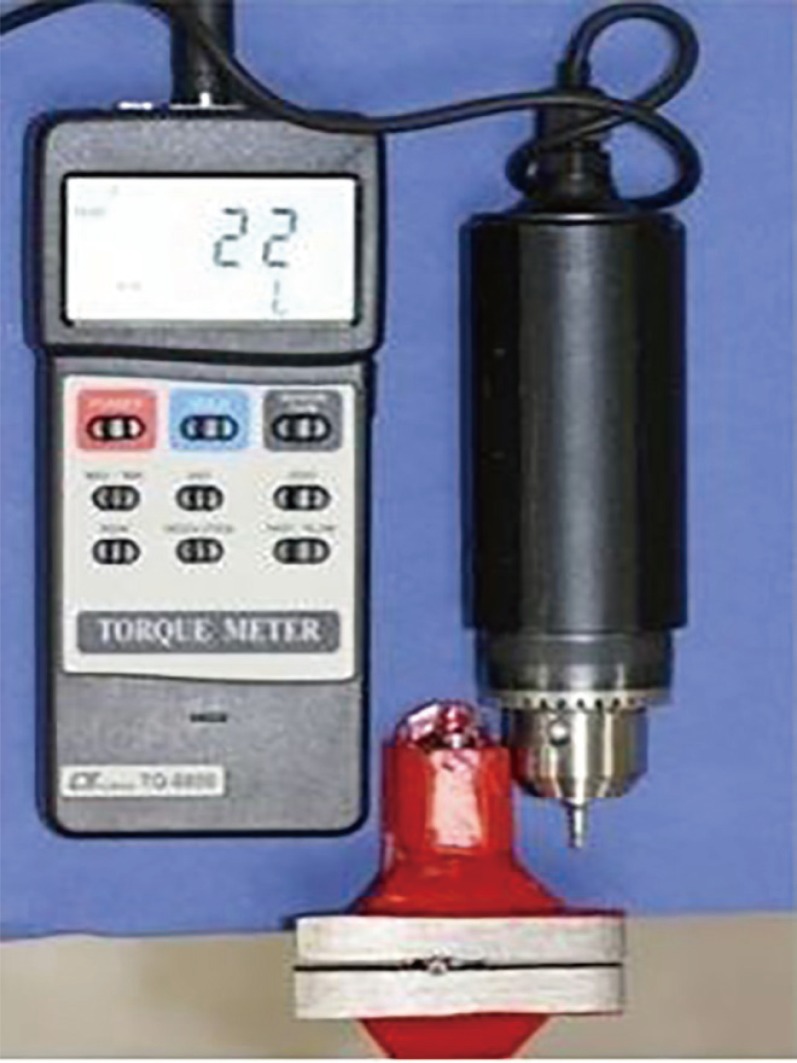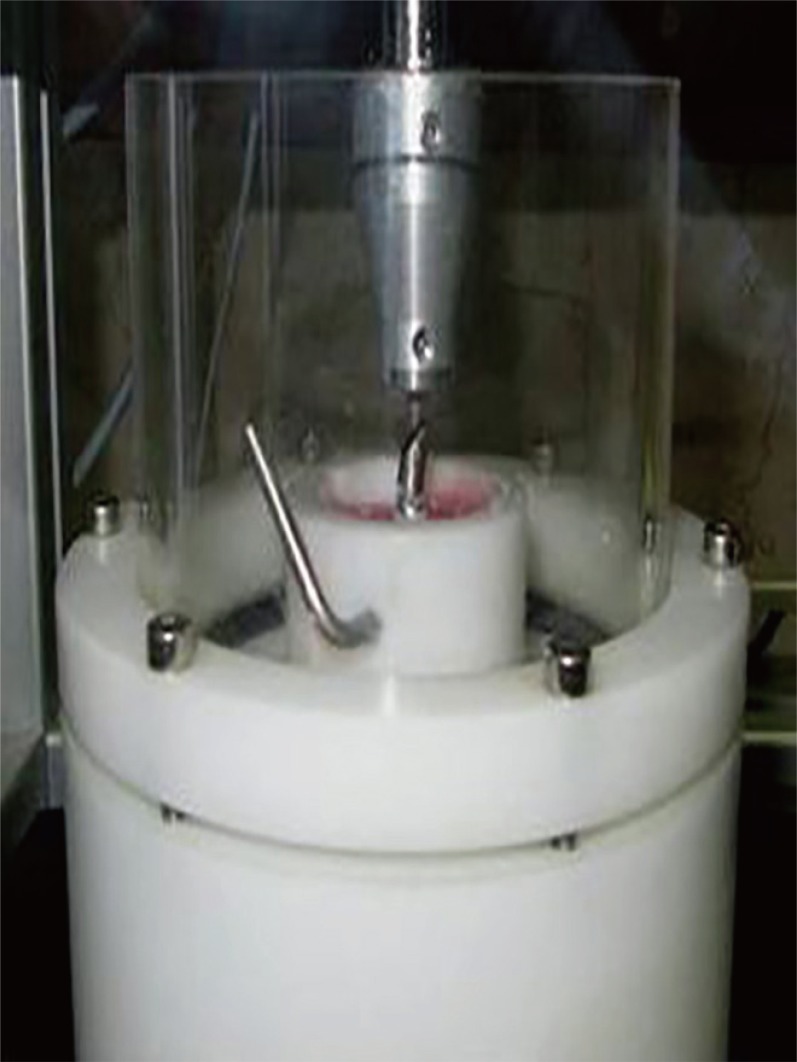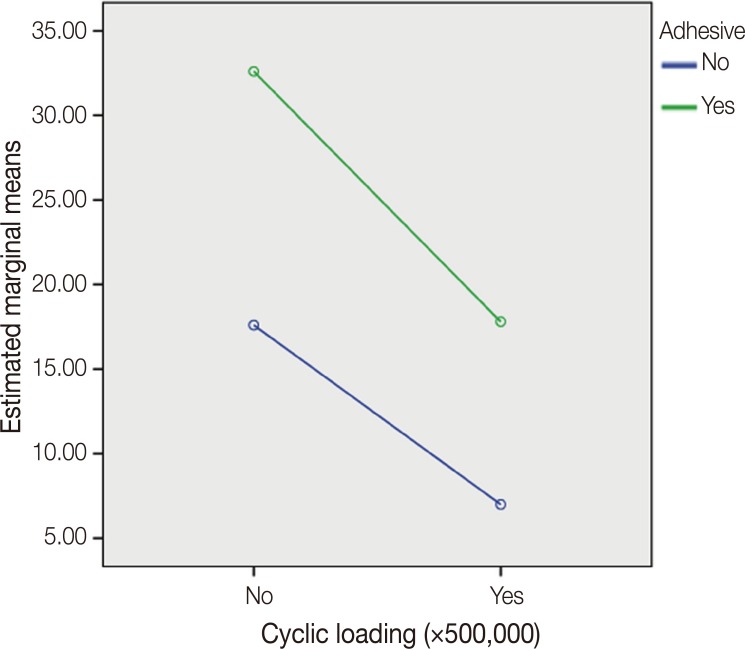J Adv Prosthodont.
2017 Apr;9(2):99-103. 10.4047/jap.2017.9.2.99.
Comparative study of abutment screw loosening with or without adhesive material
- Affiliations
-
- 1Dental Implant Center, Dental Research Center, Dentistry Research nstitute, Tehran University of Medical Sciences and Department of Prosthodontics, School of Dentistry, Tehran University of Medical Science, Tehran, Iran.
- 2Dental Implant Center, Dental research Center, Dentistry Research Institute, Tehran University of Medical Sciences and Department of Oral and Maxillofacial Surgery, School of Dentistry, Tehran University of Medical Science, Tehran, Iran.
- 3School of Dentistry, Tehran University of Medical Sciences, Tehran, Iran. sinarefoua@gmail.com
- 4School of Dentistry, Azad University of Medical Sciences, Tehran, Iran.
- KMID: 2376296
- DOI: http://doi.org/10.4047/jap.2017.9.2.99
Abstract
- PURPOSE
The purpose of this study was to achieve more retention and stability and to delay or prevent screw loosening.
MATERIALS AND METHODS
Twenty implants (Implantium 3.4 mm, Dentium, Seoul, Korea) were divided into 2 groups (n = 20). In the first group, an adhesive material was applied around the screw of the abutments (test group). In the second group, the screws are soaked in saliva (control group). All the screws were torqued under 30 N/cm, Then, the samples were gone through a cyclic fatigue loading process. After cyclic loading, we detorqued screws and calculated detorque value.
RESULTS
In comparison with the control group, all the implant screws in the test group were smeared with the adhesive material, showing significant higher detorque value.
CONCLUSION
There are significantly higher detorque values in the group with adhesive. It is recommended to make biocompatible adhesive to reduce screw loosening.
Keyword
MeSH Terms
Figure
Reference
-
1. Diez JS, Brigagão VC, Cunha L, Neves AC, da Silva-Concilio LR. Influence of diamondlike carbon-coated screws on the implant-abutment interface. Int J Oral Maxillofac Implants. 2012; 27:1055–1060. PMID: 23057017.2. Cho SC, Small PN, Elian N, Tarnow D. Screw loosening for standard and wide diameter implants in partially edentulous cases: 3- to 7-year longitudinal data. Implant Dent. 2004; 13:245–250. PMID: 15359161.
Article3. Jung RE, Pjetursson BE, Glauser R, Zembic A, Zwahlen M, Lang NP. A systematic review of the 5-year survival and complication rates of implant-supported single crowns. Clin Oral Implants Res. 2008; 19:119–130. PMID: 18067597.
Article4. Siamos G, Winkler S, Boberick KG. Relationship between implant preload and screw loosening on implant-supported prostheses. J Oral Implantol. 2002; 28:67–73. PMID: 12498448.5. Cho WR, Huh YH, Park CJ, Cho LR. Effect of cyclic loading and retightening on reverse torque value in external and internal implants. J Adv Prosthodont. 2015; 7:288–293. PMID: 26330975.
Article6. Sahin C, Ayyildiz S. Correlation between microleakage and screw loosening at implant-abutment connection. J Adv Prosthodont. 2014; 6:35–38. PMID: 24605204.
Article7. Tsumita M, Kokubo Y, Kano T, Sasaki K. Effect of fatigue loading on the screw joint stability of zirconium abutment. J Prosthodont Res. 2013; 57:219–223. PMID: 23796911.8. Binon PP. The effect of implant/abutment hexagonal misfit on screw joint stability. Int J Prosthodont. 1996; 9:149–160. PMID: 8639238.9. Zeno HA, Buitrago RL, Sternberger SS, Patt ME, Tovar N, Coelho P, Kurtz KS, Tuminelli FJ. The effect of tissue entrapment on screw loosening at the implant/abutment interface of external- and internal-connection implants: An in vitro study. J Prosthodont. 2016; 25:216–223. PMID: 26422295.
Article10. Ha CY, Lim YJ, Kim MJ, Choi JH. The influence of abutment angulation on screw loosening of implants in the anterior maxilla. Int J Oral Maxillofac Implants. 2011; 26:45–55. PMID: 21365037.11. Shigley JE, Mischke CR. Standard handbook of machine design. New York: McGraw-Hill;1986. p. 23–26.12. Khraisat A, Hashimoto A, Nomura S, Miyakawa O. Effect of lateral cyclic loading on abutment screw loosening of an external hexagon implant system. J Prosthet Dent. 2004; 91:326–334. PMID: 15116033.
Article13. Gross M, Abramovich I, Weiss EI. Microleakage at the abutment-implant interface of osseointegrated implants: a comparative study. Int J Oral Maxillofac Implants. 1999; 14:94–100. PMID: 10074758.
- Full Text Links
- Actions
-
Cited
- CITED
-
- Close
- Share
- Similar articles
-
- The effects of the design of abutment screw driver on the amount of time for insertion of screw driver into abutment screw head
- THE EFFECT OF SCREW HOLE SEALING METHOD ON ABUTMENT SCREW LOOSENING IN DENTAL IMPLANT
- A study of the effect of an anti-rotational inner post screw systems on abutment screw loosening for single implant : Part 1
- The incidence of the abutment screw loosening and its affecting factors in posterior implant restorations
- Finite element analysis of the effect of novel Lock Screw system preventing abutment screw loosening





